Birds and the Health of our Ecosystems
Last month I did some volunteer photography for a public bird banding event. There were three ornithologists on hand and I was fascinated how and why bird banding is done. I've always been interested in birds and their habits and I learned a lot so I thought I would share some of that here at 'Apertures'.
The model system for bird banding was started by a Danish school teacher in the late 1800s and not long after North America began its own bird banding program based on Hans Mortensen's use of aluminum rings and identification pratices. Not only does bird banding give information on various species of birds for conservationists but is also useful in studies related to global warming.
More information and history on bird banding
Here's a grey catbird who has been banded. It's tarsus (lower part of its leg) is being measured and that information along with its sex, weight, fat content, parasites if present, colour etc are recorded with the associated numbered band. The information then goes into a large database with the Canadian Wildlife Services.
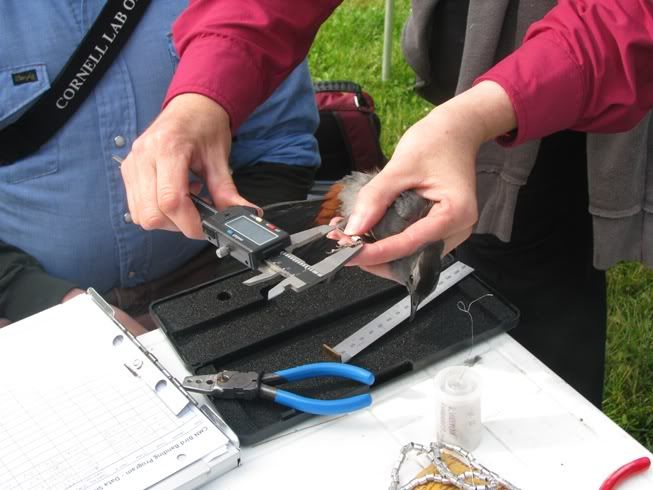
Here's a little black capped chickadee who was caught in a mist net early that morning. Depending on how they're set up in the forests and time of day these nets are pretty much invisible. The birds are not hurt by these gentle nets and gentle, experienced hands know how to free them with ease.
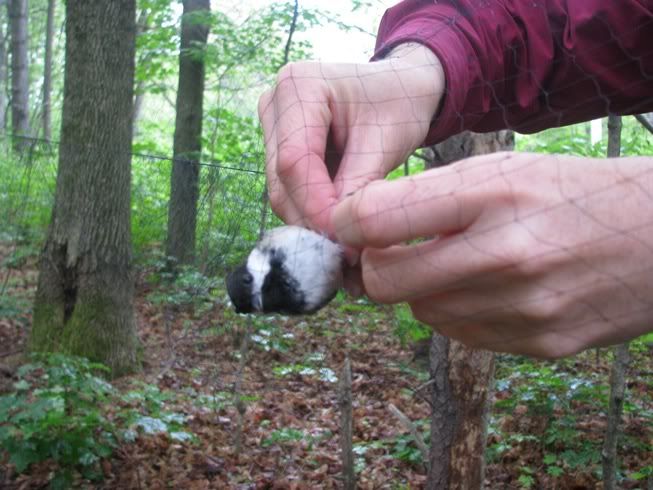
This little chickadee shows a tarsus measurement of 16.98 mm.
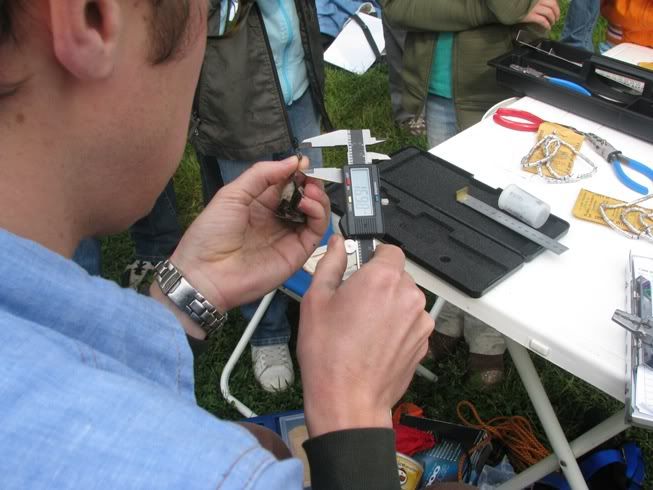
Before this little one was let go it was given a silver band with its own identity number that will be recorded with the Canadian Wildlife Service. We watched this one a nearby tree branch checking out her new jewellry before flying back to her nest. She was easily determined a female as her tummy had a bare spot which is common for birds involved in nesting.
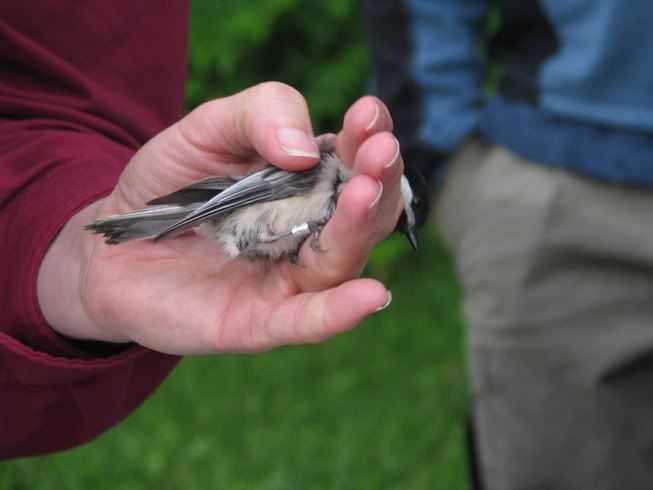
This grey catbird required a bit larger band bracelet than the chickadee.
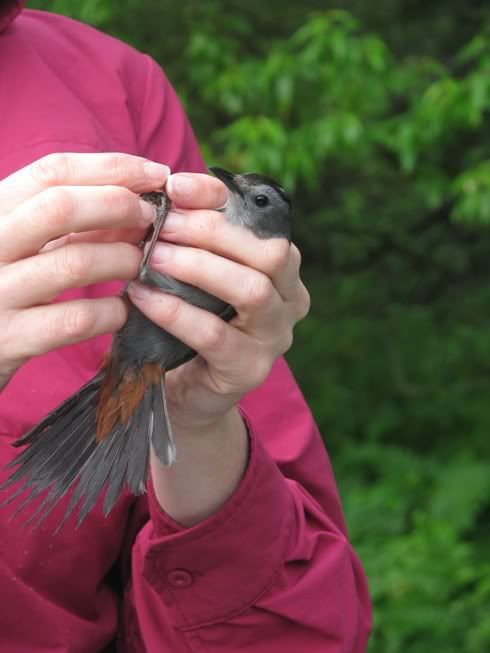
Here's a song sparrow that also was banded.

The birds are banded and studied very quickly and let go as soon as possible so as not to stress them. The ornithologists were really happy to share any information on feeding, handling and helping wild birds. They also shared some of the specific bird studies they had been involved with in the past and some of their current and future studies. There were a lot of young people on hand who learned a lot and especially the important role birds play in the health of our ecosystems.